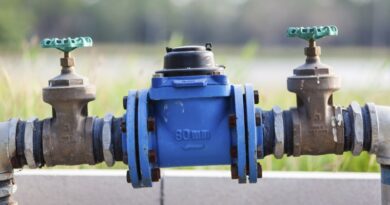New desalination system also produces hydrogen, electricity

A pair of engineers from the Qatar-based Bin Khalifa University has developed a stand-alone solar-powered freeze desalination and electrolysis system that also produces electricity, hydrogen and cool air for refrigeration. The new method is the latest technology breakthrough to boost desert agriculture activities, which face significant challenges due to high water and energy demands and the lack of necessary infrastructure.
The use of portable diesel generators, while common in smallholder farmers, leads to substantial pollution on-site. Efficient utilization of naturally available energy and water sources for the supply of essential commodities would greatly support the execution of agricultural activities in desert climates.
Freeze desalination offers many benefits over distillation processes, such as low energy demand, negligible fouling, scaling, or corrosion, and no requirement of pretreatment for purification. Besides, hydrogen fuel cell is a clean alternative to a diesel generator as it possesses high conversion efficiency and eliminates greenhouse gas (GHG) emissions and noise pollution, said the engineers – Nurettin Sezer and Sertac Bayhan – in the latest edition of Desalination journal.
“This study presents the conceptual design and analysis of a novel integrated system to support agriculture activities in hot desert environments. The design of the system features unique integration of bifacial photovoltaics, brackish groundwater production, freeze desalination with ice storage air conditioning, green hydrogen production, storage, and fuel cell, thermally coupled-with hydrogen storage canisters. This synergic integration aims to utilize input energy efficiently and store it in useful forms for times solar energy is not sufficient or unavailable”, the pair writes in the journal.
“Accordingly, daytime solar energy is used for electric power, fresh water, cooling, and hydrogen generation and storage while fuel cell power is used during night only for electric power, fresh water, and cooling purposes. The system is analyzed based on thermodynamic principles to evaluate efficiency, performance, and various figures of merit for its components. This analysis aimed to gain insights into the feasibility of off-grid freshwater and green hydrogen generation from brackish groundwater, solar-powered freeze desalination with ice storage air conditioning, and hydrogen generation, storage, and utilization in desert environments”.
The system is equipped with several energy recovery and storage solutions such as cistern, ice storage air conditioning, and metal hydride canisters with fuel cell to efficiently utilize energy and water and compensate for fluctuations in solar irradiation. The integrated system is modeled and analyzed based on thermodynamic principles, and results demonstrated the daily capacity of producing 52.8 m3 freshwater, 6.3 MWh air conditioning, 177 kg hydrogen, and 2.4 MWh electricity using 10,785m2 bifacial photovoltaics system. Moreover, the energetic and exergetic efficiency of the system is calculated as 17.8 per cent and 13.5 per cent during day and 56 per cent and 34.9 per cent during night, respectively, the team writes.



